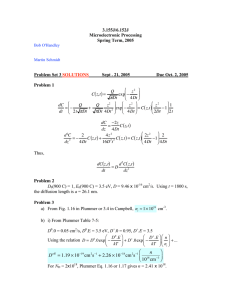Math 4600, Homework 10
advertisement
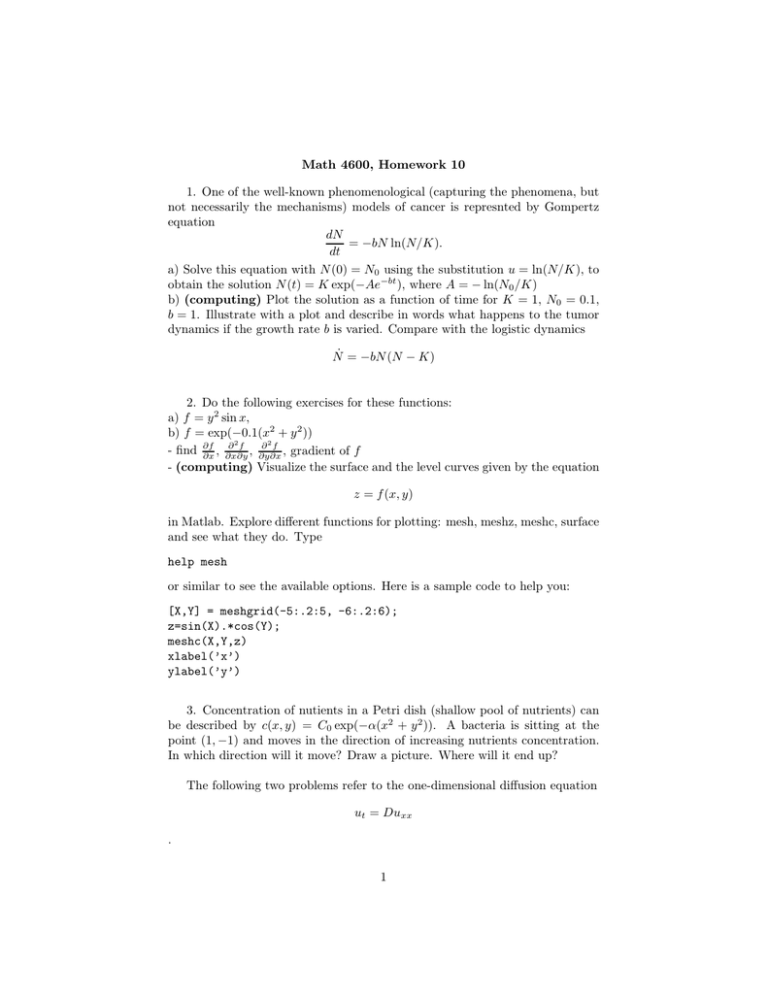
Math 4600, Homework 10 1. One of the well-known phenomenological (capturing the phenomena, but not necessarily the mechanisms) models of cancer is represnted by Gompertz equation dN = −bN ln(N/K). dt a) Solve this equation with N (0) = N0 using the substitution u = ln(N/K), to obtain the solution N (t) = K exp(−Ae−bt ), where A = − ln(N0 /K) b) (computing) Plot the solution as a function of time for K = 1, N0 = 0.1, b = 1. Illustrate with a plot and describe in words what happens to the tumor dynamics if the growth rate b is varied. Compare with the logistic dynamics Ṅ = −bN (N − K) 2. Do the following exercises for these functions: a) f = y 2 sin x, b) f = exp(−0.1(x2 + y 2 )) ∂2 f ∂2 f - find ∂f ∂x , ∂x∂y , ∂y∂x , gradient of f - (computing) Visualize the surface and the level curves given by the equation z = f (x, y) in Matlab. Explore different functions for plotting: mesh, meshz, meshc, surface and see what they do. Type help mesh or similar to see the available options. Here is a sample code to help you: [X,Y] = meshgrid(-5:.2:5, -6:.2:6); z=sin(X).*cos(Y); meshc(X,Y,z) xlabel(’x’) ylabel(’y’) 3. Concentration of nutients in a Petri dish (shallow pool of nutrients) can be described by c(x, y) = C0 exp(−α(x2 + y 2 )). A bacteria is sitting at the point (1, −1) and moves in the direction of increasing nutrients concentration. In which direction will it move? Draw a picture. Where will it end up? The following two problems refer to the one-dimensional diffusion equation ut = Duxx . 1 4. Find the steady state solution of the one-dimensional diffusion equation with boundary conditions ux (0, t) = c1 , u(L, t) = c2 , x ∈ [0, L]. Plot it. 5. In an experiment a substance of concentration A is released into a narrow tube at x = 0, t = 0. It difuses along the tube with diffusion constant D = 1. Detectors are setup along the tube at all locations x > 0. They can detect the substance if the concentration is above 5% of A. a) What is the furthest location X(t) where the detector will be responding at time t? (Hint: You will need to solve the diffusion equation before you find X(t). Use fundamental solution approach.) b) Sketch the time evolution of X(t) 2
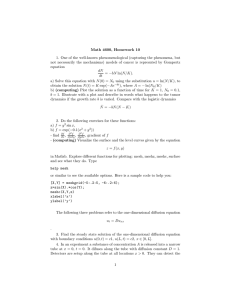
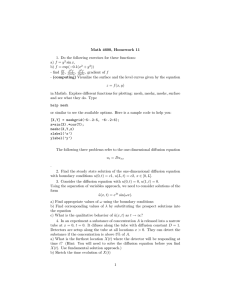
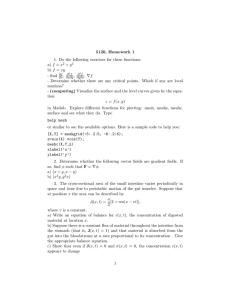
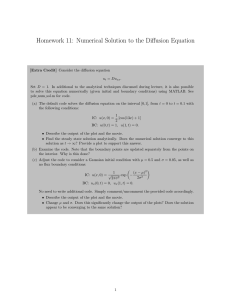




![Calculation of gas diffusion rates in the [NiFe]-hydrogenases](http://s2.studylib.net/store/data/013936147_1-e66f67eb842c3402c9869ba1639b43e4-300x300.png)

